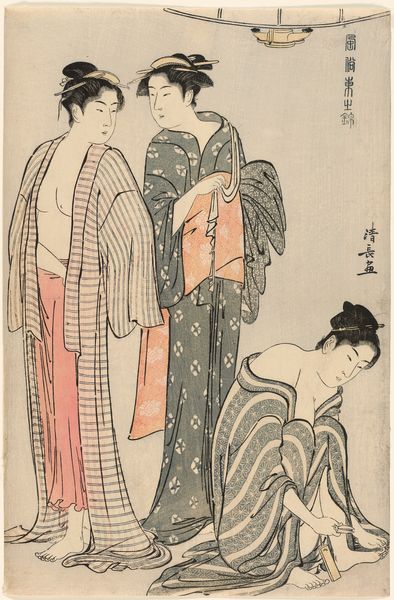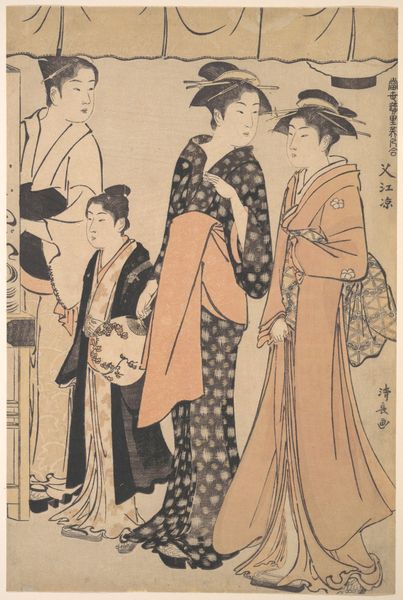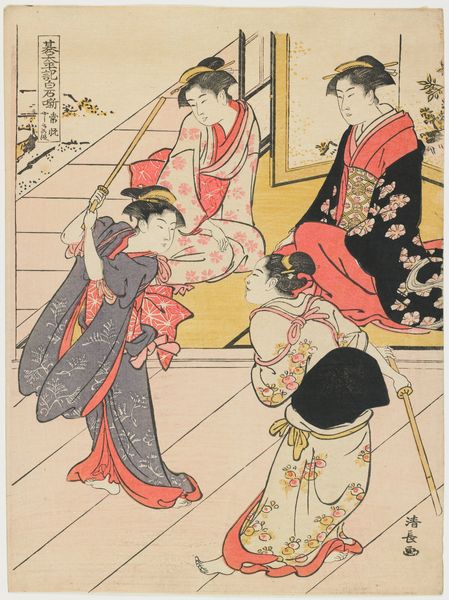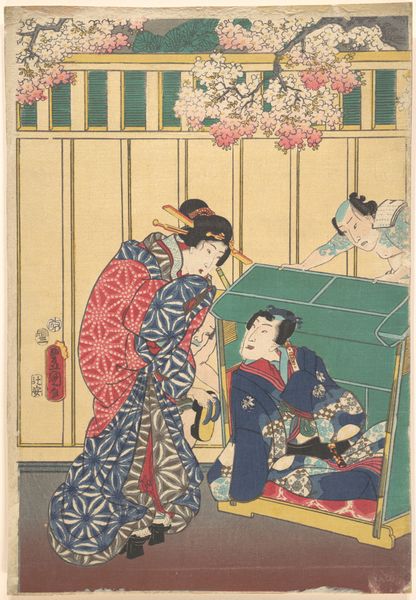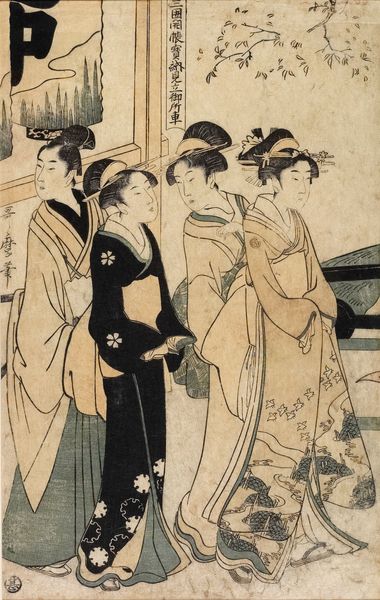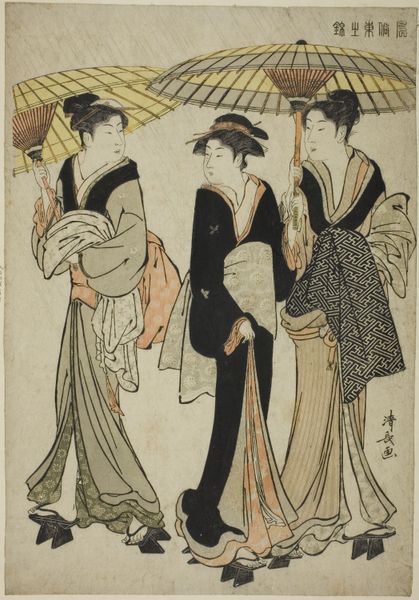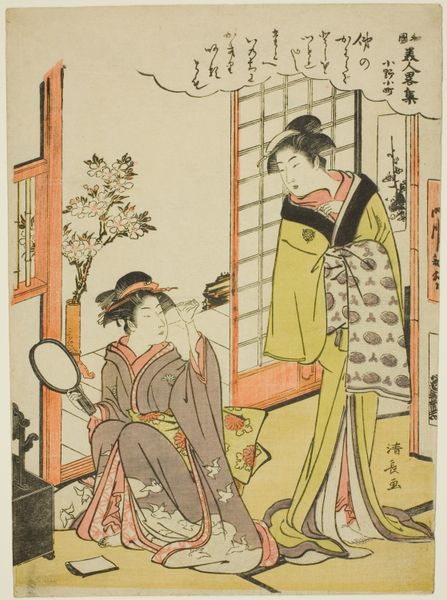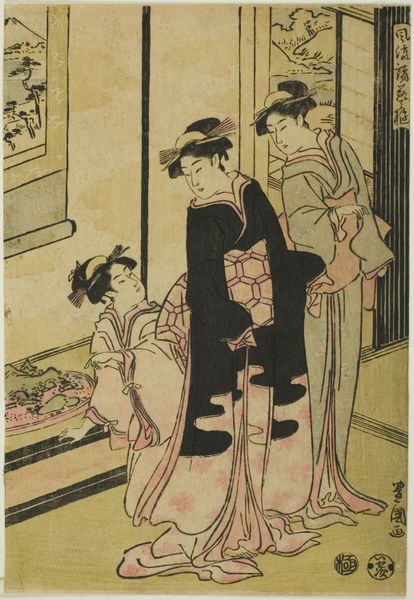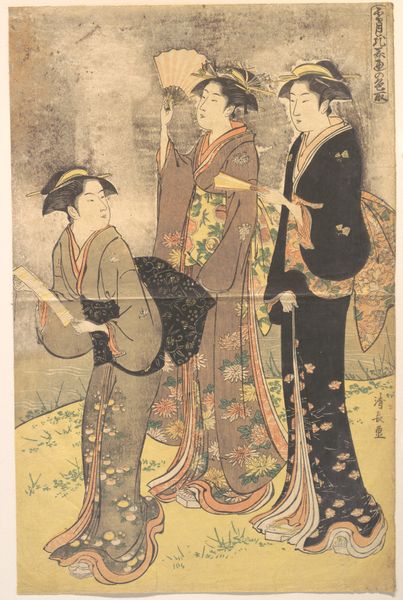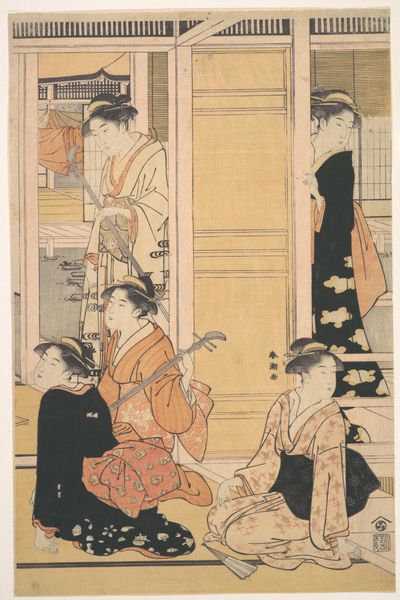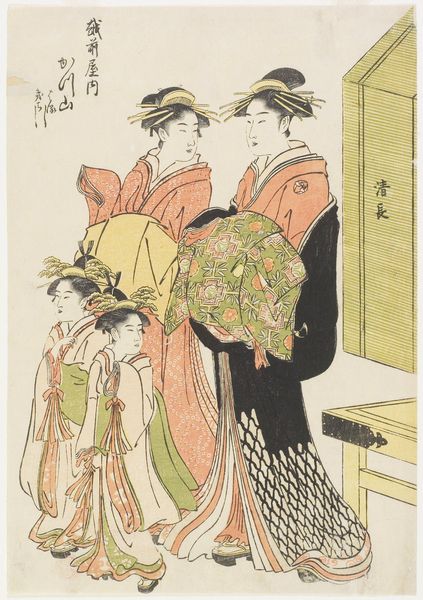
# print
#
asian-art
#
ukiyo-e
#
figuration
#
genre-painting
Dimensions: 14 1/2 × 9 3/4 in. (36.8 × 24.8 cm)
Copyright: Public Domain
Curator: Katsukawa Shuncho’s “Three Women on a Bridge,” dating from around 1775-1795, presents us with a fascinating glimpse into Edo period Japan, now housed at the Metropolitan Museum. Editor: The pale palette initially struck me—gentle grays and muted oranges—creating this subdued, almost dreamlike atmosphere. The figures look pensive, like they’re caught in a moment of contemplation. Curator: It's a classic ukiyo-e print, and Shuncho was renowned for his elegant portrayals of women, often courtesans or figures associated with the pleasure quarters of Edo. This work, with its attention to fashionable details and subtle expression, fits that mold perfectly. Notice how the artist is reflecting the influence of other printmakers of the era such as Koryusai. Editor: Knowing the social context, their apparent pensiveness could be layered with meaning. Were courtesans expected to be seen as demure? Are they yearning for different realities than the gilded cages they occupied? I also can't help but read the slight differences in dress and presentation through a contemporary intersectional lens. The varying kimonos, hairstyles—could they represent nuances in status or agency? Curator: The "floating world" genre often veiled societal complexities through depictions of beauty and entertainment. It can be tough to get behind the veil! But you do raise a good point about societal power dynamics at the time and even now. What do the arts mean in present-day globalized society? Editor: Exactly! It's crucial to consider whose gaze this image was intended for, who profited, and the agency these women truly held. Looking at the formal features of the piece, the positioning of the characters almost as a set design, might reflect the roles expected of women. Curator: Shuncho’s mastery lies in evoking emotion and elegance through a highly stylized, codified art form. But how we interpret that style, its impact, and the layers of meaning are far more nuanced and evolving conversations for all. Editor: Absolutely. These prints offer us portals not only into the past but also into our present-day understanding of identity, power, and representation.
Comments
No comments
Be the first to comment and join the conversation on the ultimate creative platform.

